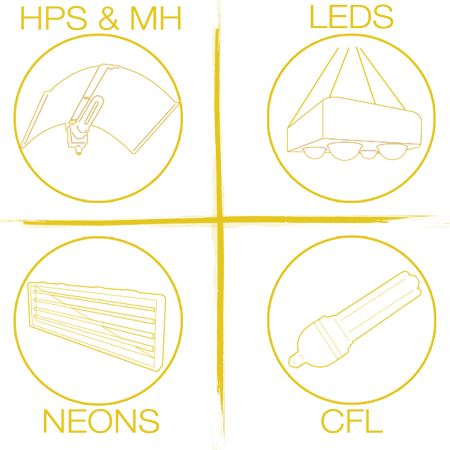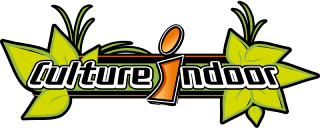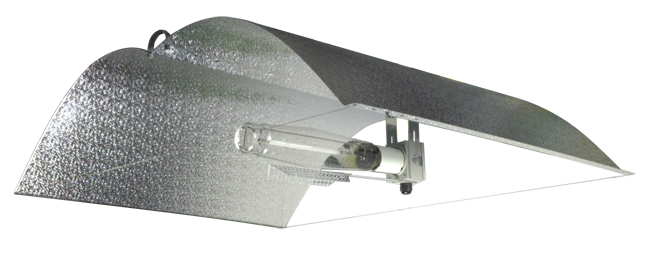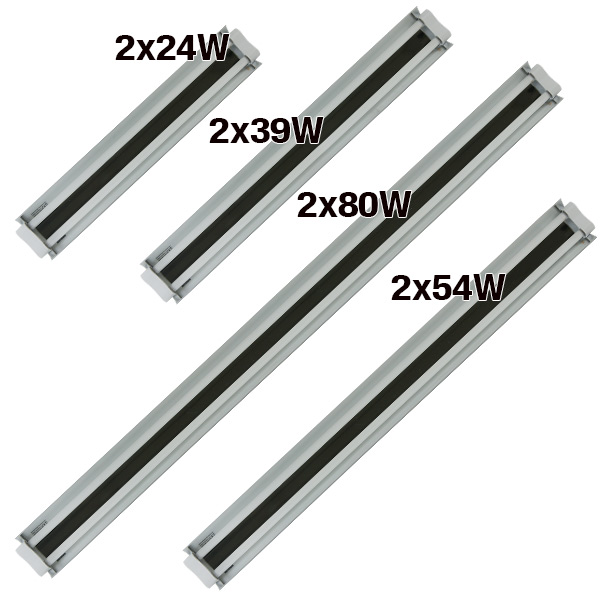The Light - Horticultural Lighting
In the Naturethe light emitted by the sun not only allows plants to grow through Photosynthesis but also to trigger fruiting or flowering thanks to the lighting time, the Photoperiod. Deprived of light, plants would decline rapidly (yellowing) and die.
Several types of bulbs recreate the conditions of natural light:
Light is essential to the success of your hydroponic or soil culture.
To enhance the intensity of the horticultural light, reflectors are perfect. Some bulbs will need a ballast like the HPS and MH bulbs.
Perhaps you prefer to go to the basics, in which case Culture Indoor offers pre-designed indoor lighting kits that fit all surfaces. Find our CFL kits or our HPS/MH kits.

The photosynthesis
It is a biochemical process essential to the plant that allows it to evolve. Combined with a supply of water and nutrients, light activity will allow plants to assimilate carbon dioxide (CO² = fuel for photosynthesis) and release oxygen. Thus, the more the light intensity is important, the more the growth of the plant is vivacious and the abundant bloom.
The photoperiod
Photoperiod is the cycle of light and darkness. In Spring, daylight hours increase, which leads to plant growth. In summer (from June 21), the light times shorten, the plants begin their flowering cycle. Indoors, the photoperiod of a growing plant is an alternation of 18 hours of light and 6 hours of darkness; that of flowering is reduced to 12 hours of uninterrupted day and 12 hours of night. It is essential to respect these photoperiods in order to avoid any unnecessary stress to the plants accompanied by a risk of restarting its growth. This "flashing" could reduce their vivacity or their flower production. These are the light and dark cycles. The use of a timer is essential to manage these alternations automatically. Only the light of the moon or the light of a green lamp allows you to observe your plants without disturbing them in their sleep.
Only the brightness of the moon outside or the light of a green lamp inside will not disturb the night periods of the plant.
Indoors, the color emitted by the light source and expressed in degrees Kelvin (K) will have an influence on the cultivated plants.
Timers
The use of a timer is essential in the culture room, automating the alternation of photoperiods.
Reminder
- in growth: 18 hours of light / 6 hours of darkness.
- in flowering: 12 hours of light, 12 hours of darkness.
It is essential to respect these photoperiods in order to avoid stressing the plants, or restarting them in growth.
The color
Released by the light source, expressed in degrees Kelvin (K), the color has an influence on the plants grown in closets. Thus, for the growth, it is preferable to use cold colors with blue-white dominance (bulbs MH, CFL or neons higher than 3000°K) and for the blooming warm colors with red-orange dominance (bulbs HPS, CFL or neons lower than 3000°K). The unit P.A.R. (or photosynthetic Activ Radiation) measures the active efficiency of a light source on the photosynthesis of the plant. In fact, the closer the P.A.R. unit is to 100% (as proposed by neon 55w, neon T5, CFL bulbs or LEDS), the more the light released by the lamp is useful for photosynthesis of the plant and therefore, the more the latter will be perennial and productive.
The light intensity
Expressed in lumens (lm ), the light intensity of a lamp will determine the optimal area lit and the production of a plant. In fact, the more important a light source is, the larger the illuminated surface on the ground and the more productive the plant will be. In this area, high pressure sodium lamps (HPS) are the most efficient. However, a certain safety distance between the light source and the top of the plants must be respected to avoid any risk of burning the leaves. There are on the market glass reflectors(Cool Tube, Xtra Cool...) to be connected directly to an extractor, allowing a considerable reduction of the heat emitted by the bulb (- 4 to 5°C), a division of the safety distances by two, and thus an optimization of the light. In order to obtain a homogeneous flower production and a better distribution of heat, it is preferable to use the same light intensities on the whole growing area. Example: to cover a 120 x 160 cm space, it is recommended to use two HPS 250W instead of one 600W.
| Type of lamp | Intensity (lm) | Optimal illuminated area | Safety distance |
|---|---|---|---|
| Neon 2 x 55W or T5 48W | about 10 000 | 100 x 50 cm | from 5 to 10 cm |
| Neon 4 x 55W or T5 96W | about 20 000 | 100 x 100 cm | from 5 to 10 cm |
| CFL 125W | 9 375 | 50 x 50 cm | from 5 to 10 cm |
| CFL 150W | 11250 | 60 x 60 cm | from 5 to 10 cm |
| CFL 200W | 15000 | 70 x 70 cm | from 5 to 10 cm |
| CFL 250W | 18 750 | 100 x 50 cm | from 10 to 15 cm |
| MH / HPS 150W | 15 000 - 17 000 | 50 x 50 cm | from 15 to 20 cm |
| MH / HPS 250W | 24 000 - 33 000 | 60 x 60 cm | from 20 to 30 cm |
| MH / HPS 400W | 32 000 - 58 000 | 90 x 90 cm | from 30 to 40 cm |
| MH / HPS 600W | 88 000 - 105 000 | 120 x 120 cm | from 50 to 60 cm |
| MH / HPS 1000W | 110 000 - 158 000 | 140 x 140 cm | 100 cm |
On the market, there are glazed reflectors (such as Cool Tube or Xtracool) valid for enclosing MH or HPS bulbs, to be connected directly to an extractor, which are very efficient insofar as they allow a significant gain of heat (loss of 4 to 5°C on average) in the growing area, to divide the safety distances by two (heat sucked in at its origin) and thus to illuminate more deeply the canopy (the plant mass).
In order to obtain a homogeneous floral production and a better distribution of the heat, it is preferable to use the same light intensities and well distributed on the whole of the culture space.
Example: to cover a space of 120X60cm, it is advised to distribute two HPS 250W rather than one HPS 600W..
Luminous requirements for cuttings
375 lm. 4000 lux - growth; 2500 lm. 27000 lux - flowering: 10 000lm. 107500 lux
HPS, MH and CMH bulbs
*HPS : High Pressure Sodium bulb. A HPS lamp does not work like a conventional incandescent lamp.
Requiring a particular intensity of current, the sodium bulb can not operate without a plate of adequate wattage (ballast). Its spectrum is ideal for flowering.
*MH : Metal Halide bulb. Its spectrum is ideal for vegetative growth.
For a more efficient bulb than the MH, think of the CMH bulb (A Culture Indoor exclusive).
Where to find HPS and MH bulbs at the best price ?
ADJUST A WINGS - Reflector ENFORCER LARGE + Wired socket
CFL bulbs
CFL* bulbs represent a considerable advance in horticultural lighting. Contrary to MH and HPS, the spectrum produced corresponds 100% to that of photosynthesis. The bulbs hardly heat at all, all the electricity used is transformed into light, not heat. They are ideal for a micro-garden, in addition to daylight or a traditional HPS or MH lamp. These bulbs do not require a ballast. The energy saving bulbs are at the best price on Culture Indoor.
*CFL: Compact fluorescent lamps that provide exceptional brightness, and save up to 75% of electricity. They are low energy bulbs, they last longer and require much less energy than traditional (or incandescent) bulbs to produce the same level of light intensity as the latter. They also produce little heat.
Neons, Fluocompacts
These small neon lights concentrate light up to 220W. They are ideal for cuttings and plants that need small amounts of light during the day. Economical, they allow cultivation in small spaces at a short distance from the plant thanks to their low heat emission. Culture Indoor offers you different ranges of neon lightst5 lighting systems, all of which are effective in carrying out your crops.
Discover the T5 high quality neon lights
T5 Superplant
The T5 lighting system has proved to be a real discovery, for plant cultivation as well as for aquariums. It is the most efficient horticultural lighting system with low heat output and high intensity.
Fluorescent tubes are now available for all phases of plant growth as well as for fish and reptiles.
Reconcile super-production and aesthetics with t5 SUPERPLANT lighting strips!
T5 operation
T5 is a special high flux fluorescent tube. It is much brighter than basic fluorescents and provides a balance of colors suitable for plant growth and fish care. Fluorescent tubes are still defined as "cooler" light sources than HID systems. The T5 incorporates a specially designed reflector for wide-angle diffusion to cover a wider growing area than conventional fluorescent fixtures.
T5s produce more light than basic tubes and give off a certain amount of heat. However, they are definitely cooler than HIDs and can be placed much closer to the plants or aquarium. A huge advantage in terms of effective light output - closer = brighter. The inverse square laws prove that the light projected onto a surface is inversely proportional to the square of the distance from the source. This means that the closer your lights are to your plants, the better they do. The distance is divided by two and the light is multiplied by four. Technically speaking, the inverse square law only applies to point sources of light. Since fluorescent lamps are long thin tubes, they can be thought of more as linear sources, which behave slightly differently. The point is that fluorescent lamps - including the powerful T5 tubes - can be placed very close to plants. The raw power of T5 is considered capable of exceeding the penetration of HID lamps. T5 tubes are mounted inside shallow reflectors including ballasts, saving considerable space. You can now grow plants with limited height.
T5 use
The use of the T5 system during the propagation of your plants allows them to grow harmoniously and to grow with short internodes and thick stems. Unlike other fluorescent systems, it can be used throughout the life cycle of your crops to produce high quality mature plants, both growing and flowering. Two types of tubes are available: T5 growth tubes (6500 Kelvin), supplied as standard, produce the bright white light needed for lush growth. This light is perfect for growing young plants and plants in general. These tubes are highly recommended for all types of plants and offer the advantage of highlighting the most spectacular plants such as orchids by emphasizing the bright green of their foliage and their very colorful flowers. T5 bloom tubes (2700 Kelvin), sold separately, are designed to provide the exact color spectrum needed by plants to produce abundant fruit and flowers.
T5HO Superplant
T5HO from Superplant is the new economical indoor light from Superplant. The slim design of these lighting strips has the particularity of being able to be connected to each other. The T5HO is the ideal tool for all germination, growth and flowering phases. Plug and play, these T5s can be hung vertically or horizontally, as main or additional lighting. Find your ideal T5HO kit on Culture Indoor.
Led lighting
Energy consumption reduced to a third, without the use of auxiliary equipment related to MH/HPS bulbs (fan, reflector, air conditioner ...). LEDs provide the ideal wavelengths for your plants, unlike MH/HPS which provide unnecessary light to plants. They can support the needs of plants during all stages of growth and flowering. Lasts 10 times longer than MH/HPS bulbs - They do not heat up and are very resistant to shocks and temperature variations. Environmentally friendly, they do not contain the harmful substances of MH and HPS, such as mercury.
To learn more, please visit our dedicated page of Tips for using LEDs.
Plasma bulbs
The plasma lamp is often presented as the future ofhorticultural lighting, it emits little heat, does not consume electricity and generates an impressive amount of light. What is a plasma bulb?
Find all our tips for your indoor growing :
- Tips for indoor growing : The Light
- Indoor growing tips : Air
- Indoor growing tips : The Substrate
- Growing tips for indoor plants : Water and fertilizers
- Growing tips for indoor plants : Germination and Cutting
- Growing tips for indoor plants : Growth
- Growing tips for indoor plants : Flowering
- Growing tips for indoor plants : The growing room
- Tips for indoor growing : Systems
- Growing tips for indoor plants : Water control
- Growing tips for indoor plants : Aquaponics
- Growing tips for indoor plants : Accessories



